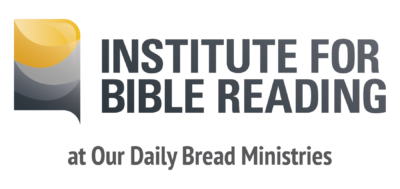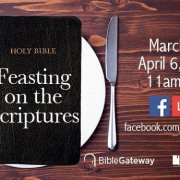High School Bible Teacher Shares How Immerse “Reinvigorated” His Class
My name is Ben Tameling, and I am a Bible teacher at Grandville Calvin Christian High School. I am writing to express my enthusiasm for the Immerse: The Reading Bible series created by the members of the Institute for Bible Reading and published by Tyndale Publishers. For the first time this semester, I used the Kingdoms book for my Old Testament Survey class and the Messiah book for my New Testament Survey class. In both cases, it reinvigorated my teaching and my students’ approach to the Bible. What struck me so positively from this experience are the following three qualities.
First, my students and I really appreciated and enjoyed the “user-friendly” format of Immerse. I had several students remark that reading the Bible this way felt less intimidating. As a Bible teacher who personally loves reading and studying the Bible, this comment blew me away at first, but then I began to see where students were coming from: all of the study notes, cross references, and footnotes in many well-meaning “study Bibles” end up distracting young people from actually reading the text itself. Reading both a large portion of the Old Testament and all of the New Testament using this format helped students focus on the grander narrative. The introductions to each book gave us helpful historical and cultural context for each book, but then we were off and running, uninhibited by the clutter of so many gigantic Study Bibles.
Allowing students to “immerse” themselves in Scripture allowed me as a teacher to let students’ observations and reactions drive the class.
Third, going along with the above points about the user-friendly format and the student-driven dialogue, I believe using Immerse has allowed students to work toward a more holistic understanding of the Bible rather than see it as a series of disconnected “devotional chunks”. In my experience using Kingdoms, students could now approach the account of the Israelites entering and then exiting the Promised Land as part of a Story, more like an absorbing, tragic novel rather than a tedious textbook. Likewise with Messiah: suddenly all of the teachings and miracles of Jesus flowed together into a discernible storyline conveyed similarly yet differently by each Gospel writer. And rather than rush as a teacher to try and make each and every passage “applicable”, it was fun to watch students make connections between then and now themselves.
All in all, I am so glad that I was made aware of Immerse: The Reading Bible and can’t wait to keep exploring ways to integrate it into my other classes, refining and honing my own skills as a teacher to help open up the Bible to students, and in turn being blessed by what they teach me through this experience of reading communally.
In Christ,
Ben Tameling
Bible Teacher
Grandville Calvin Christian High School








